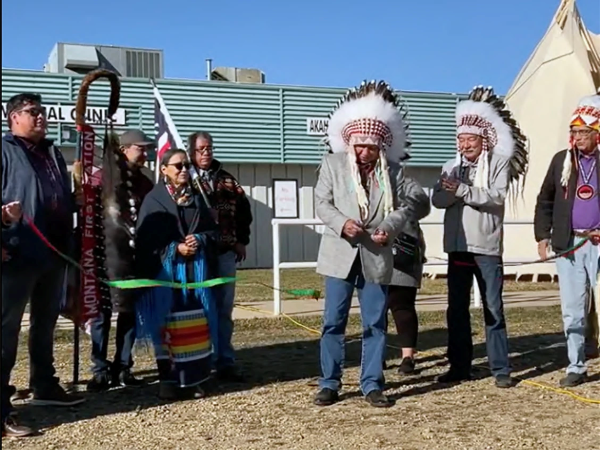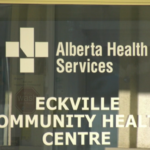
By: Christina Max
The ribbon was cut to open Montana First Nation’s Akamihk Health Care Services Clinic and Greenhouse last week.
“It’s important for Montana and all communities,” said Montana Chief Leonard Standingontheroad.
The opening of the clinic and greenhouse isn’t specific to Montana’s people, said Standingontheroad. ”It’s for everybody that desires to come and have services or require food. That’s what it’s all about.”
The clinic is an innovative center in Montana First Nation with a team committed to providing optimal care to both status and non-status individuals, from primary care to addictions services.
George Addai, general manager at MFN Management Inc, which oversees Montana First Nation’s corporations said the clinic will be offering family care and diagnostic imaging services as well as mental health services.
“It’s open to everybody — not just the community members,” he said.
They currently have one doctor on staff and are looking to recruit two more to ensure the clinic is open five days a week. In addition to in-person patient care, there is also a tele-health option for patients who can’t get into the office.
As the clinic is established, Addai said they want to expand services to meet the physical and mental health needs of the people of Montana and the surrounding areas — including the Wetaskiwin and Ponoka areas.
The new, state-of-the art hydroponic facility will be producing more than 10 types of lettuces, kale, spinach and herbs with no synthetic pesticides, using 90 per cent less water and providing a reliable supply of health food to communities across Alberta.
Pointing out it was the First Nations people who helped the original settlers survive historically, Standingontheroad said that was taken away over time through the Indian Ace.
“That’s what we’re going back to here. It’s a long process, but it’s a start and I’m happy to see some of our neighbours here to witness this event.”
The opening is a step toward independence, he said.
“We have to teach our young ones what is needed in our community, teach them those disciplines so they can come back and serve their community.”
Treaty 6 Grand Chief George Arcand Jr. said, “I’ve become very much aware or our situations in our communities…on the health and safety side.”
Feeling like First Nations were left behind during the COVID pandemic health issues, Arcand said they have been working with the Province on these issues.
“I think we did a pretty darn good job in our communities keeping and managing COVID, but it also gave us a strength to determine we could do better in our communities and provide better services.”
Projects like the clinic and greenhouse show that “as we open our minds to doing new things, the boundaries become limitless for our people,” he said.
“I’ve always felt that nobody’s going to look after our communities but us,” he said. “We’ll get the tools but , at the end of the day, it’s us who will look after our communities.”
Projects like this can provide new opportunities to First Nations communities, as well as helping neighbouring communities that can change thinking across the country.
“Maybe some day we’ll be able to look after our people with our land.”
Wetaskiwin Mayor Tyler Gandam was in attendance and he said, “It’s fantastic to see the regionaliaztion that goes along with it. When Montana First Nations succeed, the whole region succeeds.”
Gandam said the relationship Standinghontheroad has been building with the City of Wetaskiwin benefits both communities.
“I think that’s really important that we have those open lines of communication to celebrate those achievements.”
First Naitons Inuit Health Branch Indigenous Services Canada regional executive director Rhonda Laboucan, said two years ago, Standingonthe road approached her about “bringing services home”.
“It’s pretty innovating bringing primary care access home,” she said.



